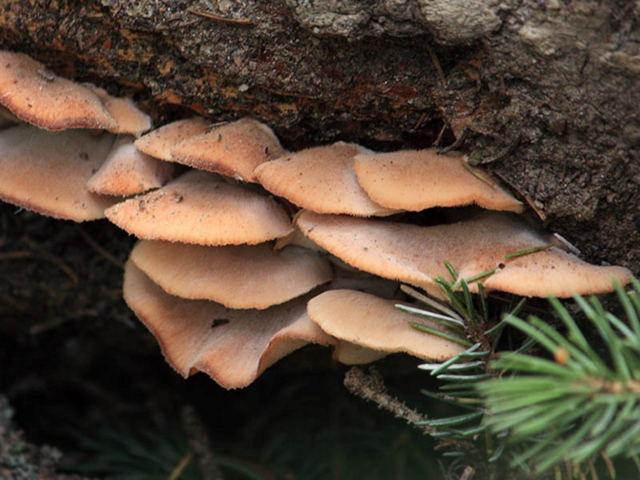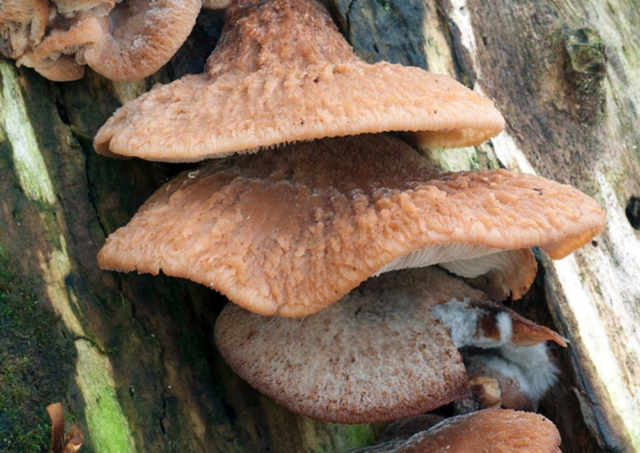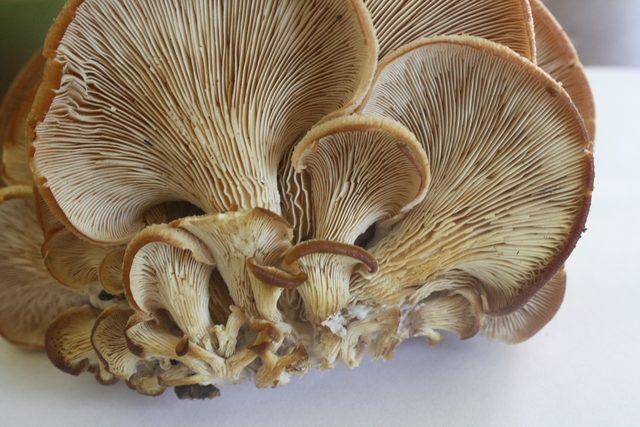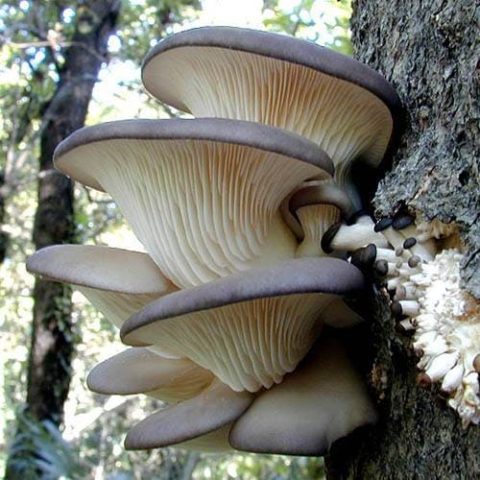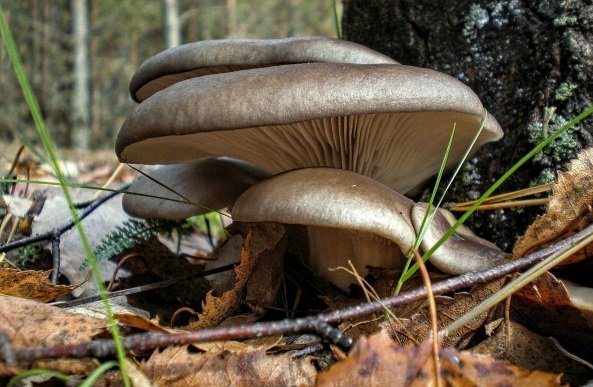Content
Wolfsweed is a mushroom of the Polyporov family of the genus Sawfoot. It got its name from its destructive effect on wood, and the plates of the cap have a serrated edge, similar to the teeth of a saw.
What does wolf sawnose look like?
The fruit body has the shape of a growth that appears on the tree trunk at an angle of 90º. It consists of a flattened cap and a leg that is not visible.
Description of the hat
The shape of the hat can be compared to the tongue, sometimes the ear or shell. Its diameter is 3-8 cm, but there are also larger mushrooms. Color - light brown, yellow-red. The edges are gradually wrapped inside the cap. The surface is uneven, felt. Hence the second name - felt saw-leaf. Sometimes you can see whole clusters of sawfoot, from a distance it resembles a tiled roof.
Leg description
There is no pronounced border between the leg and the cap. The lamellar inner surface with longitudinal fibers smoothly turns into a leg only 1 cm high.
In young saw-leaved plants, it is light, almost white, in overripe, dark, in places black. Soft, tender pulp gradually thickens, becomes tough.
Where and how it grows
The wolf sawnose is distributed throughout the temperate climatic zone from Canada and the United States of America to the Far East of our country. They are also found in the Caucasus. Mushrooms are undemanding to heat, unpretentious. They begin to grow from August to the end of November. Their main place of growth is the trunks of rotting stumps, deciduous trees. These are saprotrophs that destroy wood.
Is the mushroom edible or not
Despite the good mushroom smell emanating from wolf sawfoot, it is considered inedible. The pungent taste does not disappear even after cooking. There is no information about the toxicity.
Doubles and their differences
These saprotrophs are difficult to confuse with other fungi. But there are types of fruiting bodies, very similar to wolf sawnose. Among them:
- Edible oyster mushrooms in shape are difficult to distinguish from sawleaf. But they are light gray in color, sometimes they acquire a purple tint. The surface of the cap is smooth, slightly velvety. Grows in deciduous, coniferous forests.
- Another type of oyster mushroom is confused with felt-leaved leaf - autumn. It appears in early spring, grows until late autumn in the northern part of the Caucasus Mountains and in the temperate latitudes of the European territory of Russia. Color - olive brown. The hat has a wavy surface. In the rainy period it becomes glossy. Do not eat because of the bitter taste.
Conclusion
Wolf sawnose is not dangerous and not poisonous. However, you should not experiment with cooking: the consequences may not be very pleasant.
